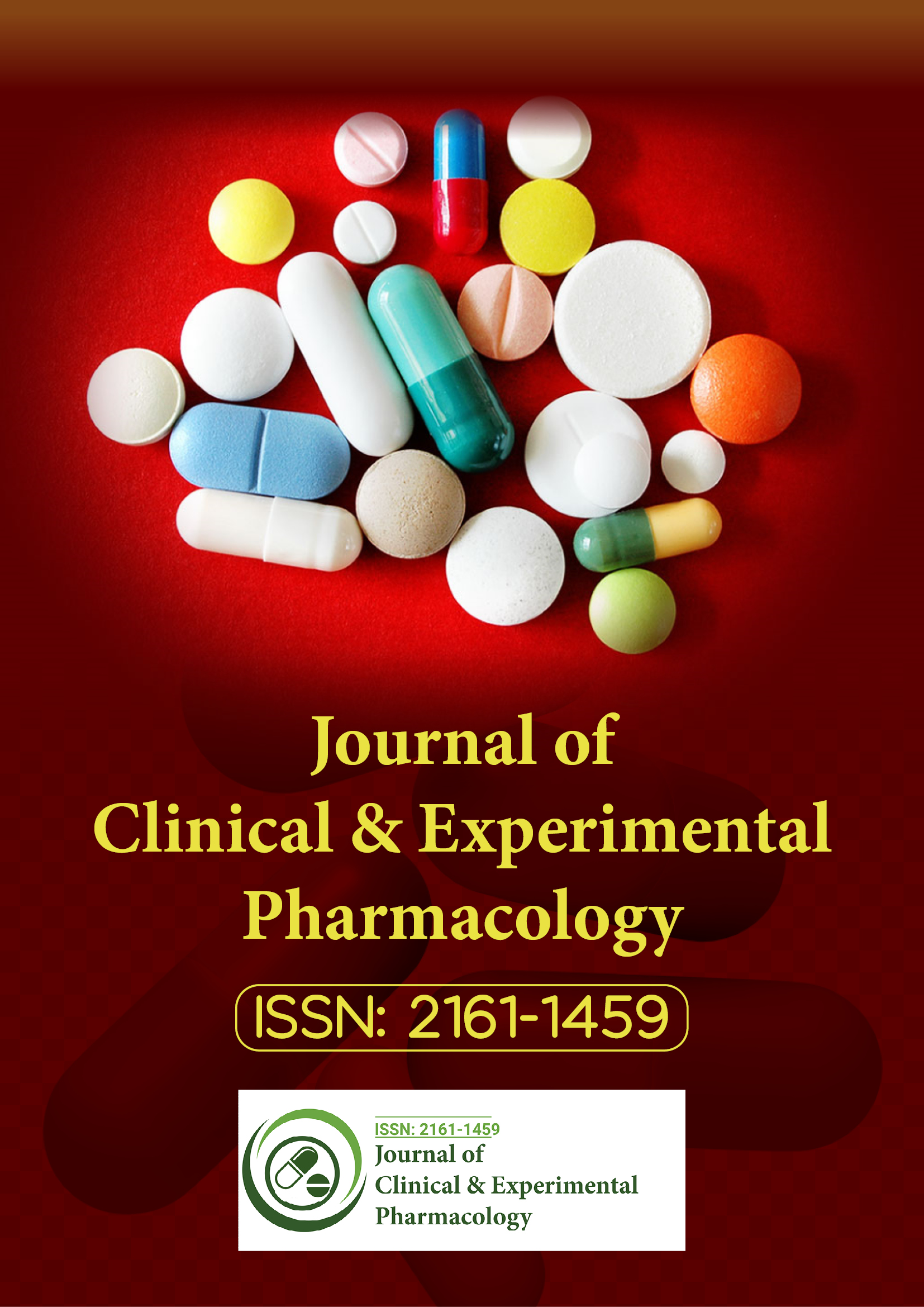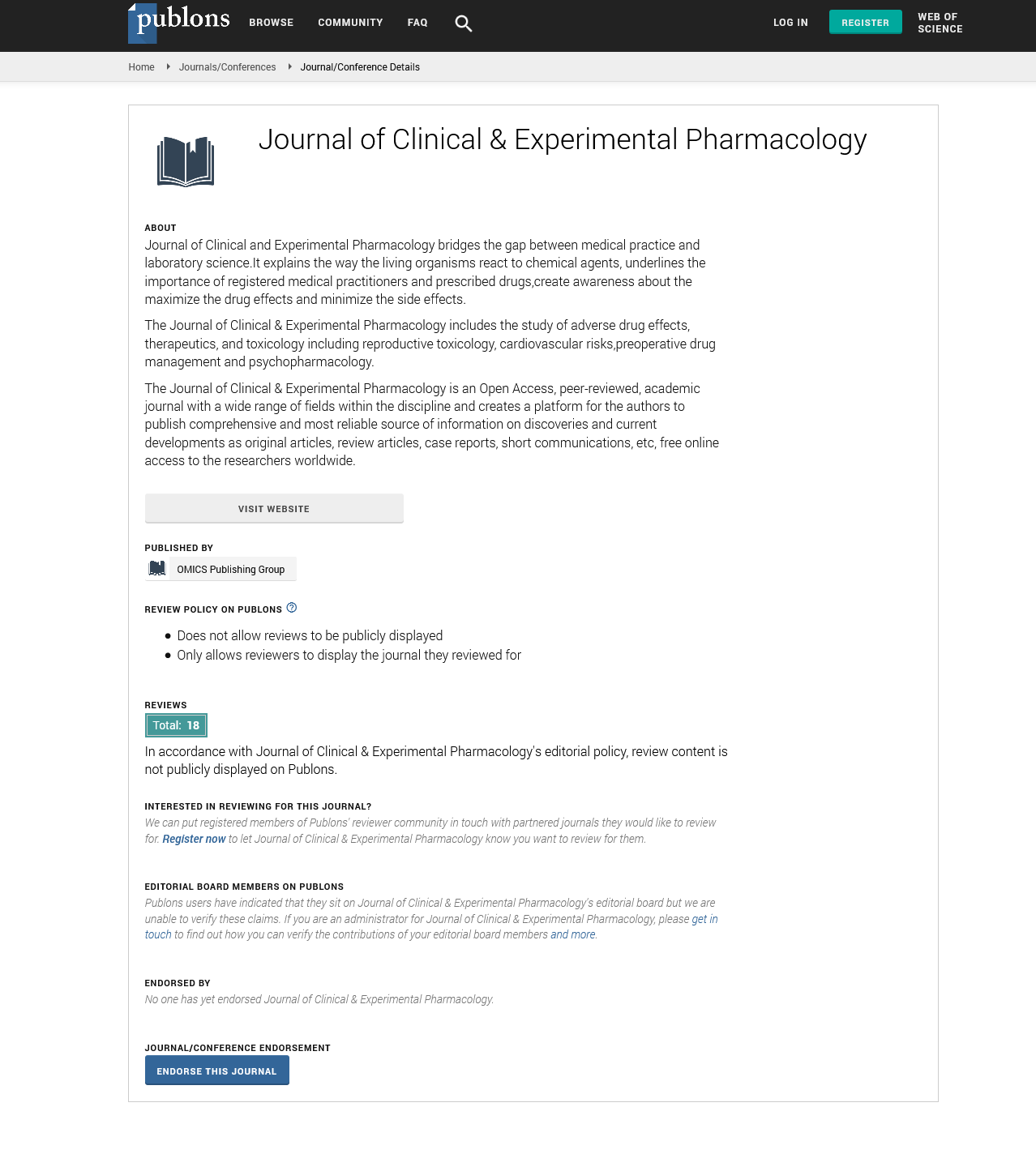Indexed In
- Open J Gate
- Genamics JournalSeek
- China National Knowledge Infrastructure (CNKI)
- Ulrich's Periodicals Directory
- RefSeek
- Hamdard University
- EBSCO A-Z
- OCLC- WorldCat
- Publons
- Google Scholar
Useful Links
Share This Page
Journal Flyer

Open Access Journals
- Agri and Aquaculture
- Biochemistry
- Bioinformatics & Systems Biology
- Business & Management
- Chemistry
- Clinical Sciences
- Engineering
- Food & Nutrition
- General Science
- Genetics & Molecular Biology
- Immunology & Microbiology
- Medical Sciences
- Neuroscience & Psychology
- Nursing & Health Care
- Pharmaceutical Sciences
In vitro interaction of amoxicillin with calcium chloride (fused) at pH 7.4 and pH 2.4
World Congress on Pharmacology
July 20-22, 2015 Brisbane, Australia
Joysree Das, Nasrin Sultana, Aninda Kumar Nath, Raju Dash and Md Mohaiminul Islam
Posters-Accepted Abstracts: Clin Exp Pharmacol
Abstract:
This study was aimed to evaluate the in vitro complexation nature and strength of complex which may be formed due to interaction between Amoxicillin and Calcium Chloride (CaCl2). The interaction of amoxicillin and calcium chloride (fused) has been studied in aqueous systems at a fixed temperature (37±0.5)°C and under different pH (pH 7.4 and pH 2.4) by using some physical methods as Spectral observation, Job?s method of continuous variation, Ardon?s method. It was observed from spectrophotometric study thatamoxicillin gives a sharp peak at 272 nm. But when calcium chloride was mixed with amoxicillin in 1:1 ratio, the intensity of the peak of amoxicillin changed remarkably due to interaction. The Job?s plot was obtained by plotting absorbance difference against the mole fraction of the each drug at pH 7.4 and pH 2.4. Amoxicillin forms strong 1:1 complex with calcium chloride and reverse V-shaped curves indicate the formation of 1:1 complexes of amoxicillin with calcium chloride. These may indicate strong kinetics of complexation between amoxicillin with calcium chloride. The value of stability constant for the complexation of amoxicillin with calcium chloride at pH 7.4 and pH 2.4 were obtained from the spectral data using Ardon?s plot. The value of stability constant for the drug-metal system at pH 7.4 and pH 2.4 are 5.54 and 6.67 respectively. At pH 2.4 it is found that amoxicillin forms relatively stable complex with calcium chloride (stability constant 6.67)which is high in comparison to the stability at pH 7.4. It can, therefore, be concluded that a careful consideration is needed during concurrent administration of amoxicillin with calcium chloride.

